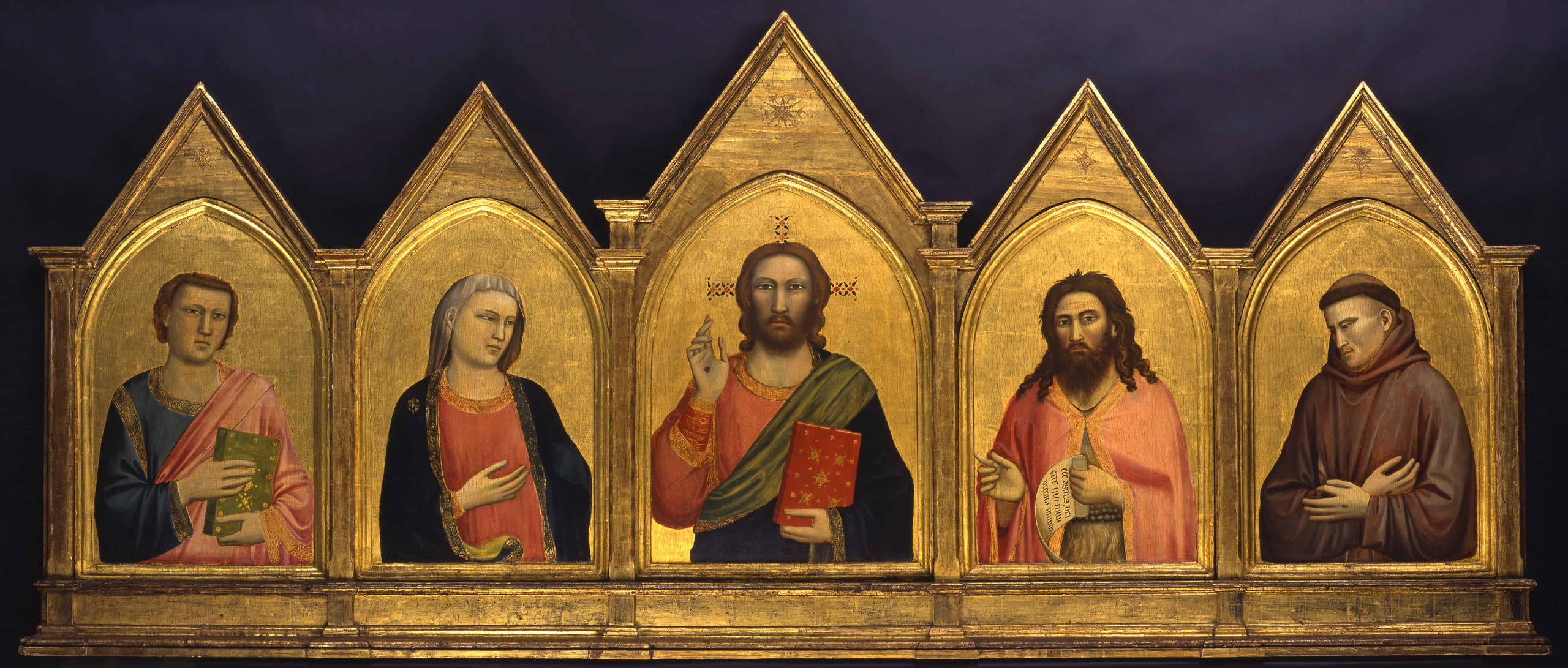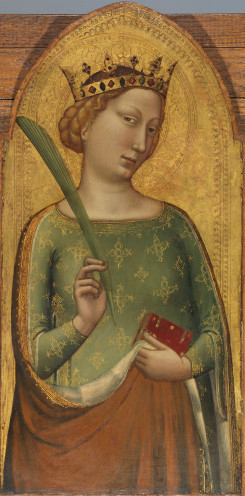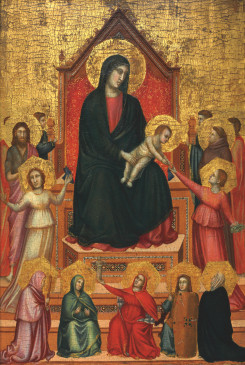I visited the AGO’s latest exhibition, Revealing the Early Renaissance: Stories and Secrets in Florentine Art, on the sunny morning of Good Friday. It was an appropriate time to stop by the exhibit, considering that many of the works on display contain Christian iconography of the birth, death, and resurrection of Jesus. These images are usually kept within the solemn silence of a church, but at the AGO, the works are housed in a gallery space filled with the bustling sounds of families and enthusiastic art-lovers.
Curator Christine Sciacca, who works at the J. Paul Getty Museum, and the AGO’s assistant European curator Sasha Suda, have organized a collection of 90 works rendered in a variety of media. A stained-glass window is illuminated against one wall of the gallery, while another room contains the extant 28 pages of a more than 650 year-old manuscript entitled Laudario of Sant’Agnese. Painted wood triptychs, works consisting of three wooden panels attached by hinges, are featured throughout. All of these pieces are connected by the stories they represent.
Though the exhibition is heavily Christian in theme, it is also a celebration of literature. There is a room dedicated to Dante Alighieri, which features the earliest illuminated copy of his Divine Comedy published in 1337. There is also a Bible manuscript from around the same time period that boasts an illustration of Eve being created from the ribs of Adam.
Given that the majority of the works date to the fourteenth century, their decoration is in impressively good condition — or so it seems. The Chiarito Tabernacle was created by Pacino di Bonaguida in the 1340s. The centre panel features the 12 apostles being fed from Jesus’ navel, rendered in gilded gesso. The side panels of the triptych feature scenes of Jesus’ life, including what appears to be a black background and figures wearing red and white outfits. Yet an explanation next to the work reveals that the black paint was initially blue, the reds were initially pink, and the whites were at one time a yellow hue. Still, the work is remarkable in its detail and the gesso is unique among the exhibit’s other triptychs.
In the final room of the exhibition, there is a video that depicts the tempera process. Tempera is an egg-yolk form of paint that was used to illustrate manuscripts and triptychs. There are also models of the tools that Renaissance artists would have used to create and use tempera paint. The AGO’s video reveals the secrets of Renaissance pigment-making, which involved an impressively innovative method of oxidizing copper to create a magnificent deep green.
A massive photographic mural of present day Florence concludes Revealing the Early Renaissance, transporting visitors to the city that was once the vibrant home of the works on display in the exhibition.
Revealing the Early Renaissance: Stories and Secrets in Florentine Art runs until June 16 at the AGO.




